Street photography is one of the most demanding areas of photography. It is not easy to photograph people in their everyday surroundings. You need a lot of time and patience, you have to work hard to find the right moment. It also takes a bit of courage to approach strangers and take pictures of them. In this article, we look at exactly what street photography is and how it differs from the other genres of photography. Some of our best tips should also help you get started with street photography.
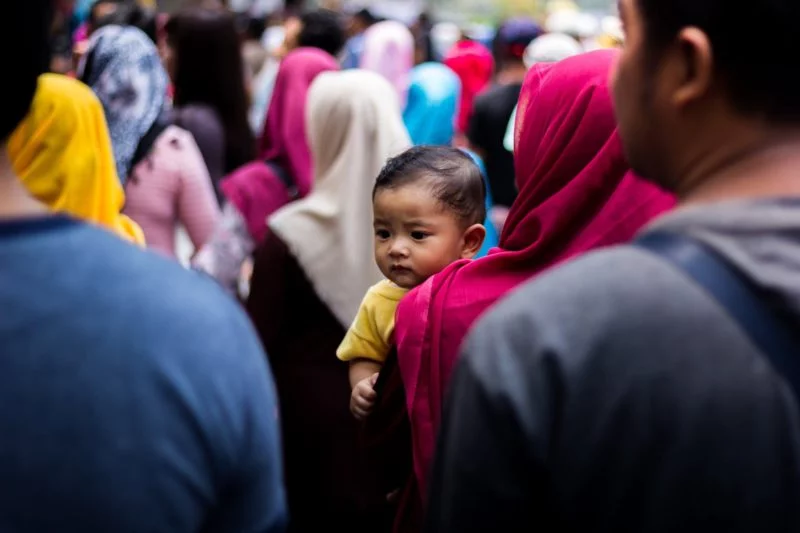
On my photographic journey, I dedicated myself to very different genres. I photographed animals, travel, landscapes and also sports. But street photography sets the highest standards and satisfies the most. How come? Because street photography, like animal photography, requires patience, perseverance and luck. You have to react quickly and intuitively, like in sports photography. As in travel photography, you have to be able to tell stories. And like in landscape photography, you have to think carefully and creatively to present the viewer with a convincing and captivating picture. If you are interested in this type of photography, then read on.
What is street photography?
Wikipedia does not provide an exact definition of street photography, but it does give us an apt description:
In general, this means a photograph that is created in public space, looking into the streets, into shops or cafés, picking out passers-by or individuals, often as a snapshot, but also as an essay-like sequence and milieu study.
Generally speaking, street photography is about capturing life in public space. And contrary to the name, street photography does not have to be created on the street. Street photography can be practiced anywhere.
I live on a boat at times. So I spend a lot of time on the water, on the beach and in ports. On rainy days, I’m drawn to museums, cafes, and sometimes to a mall. Public transport is particularly suitable for street photography. You can always find great motifs on trains or buses. Rural areas should not be neglected. Even if you don’t live in the big city, it doesn’t stop you from doing street photography.
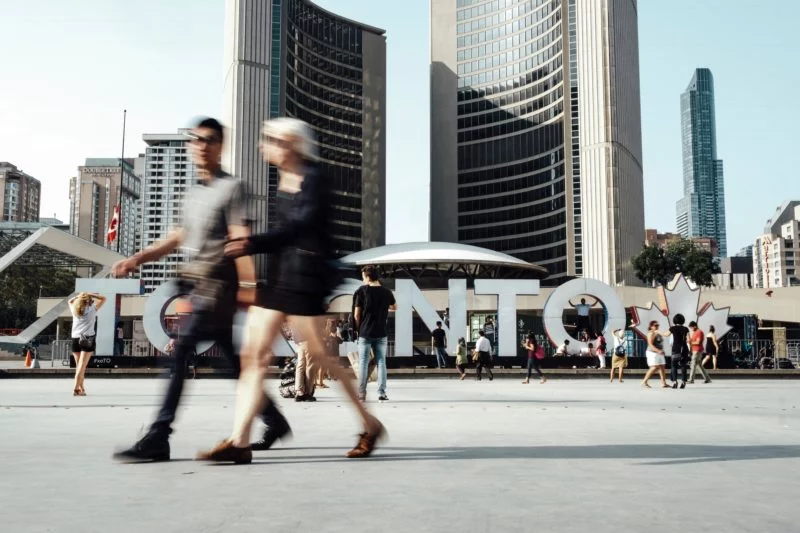
What makes a good picture?
The social media are flooded with mediocre, if not to say, below-average images. Simply pointing the camera somewhere and pressing the button does not qualify as street photography. As always in photography, the composition of your picture decides on success or failure.
A good street picture needs a clearly defined motive. All rules of art such as the rule of thirds , leading lines , use of negative spaces, symmetry, and so on still apply. Try to tell a story with your picture. Create images that make the viewer pause and stimulate thoughts and questions. These are signs of good street photography.

Does street photography need people?
One can argue about whether street pictures must include people. Principle riders insist that every street scene needs people. I take a more relaxed stance. I believe that street photos do not need people, but an indication that someone was there. For example, shadows can provide food for thought. So people can only be guessed at. I also like to take pictures of things that have been left behind. Such images make the viewer wonder what the story behind the discarded object may be.
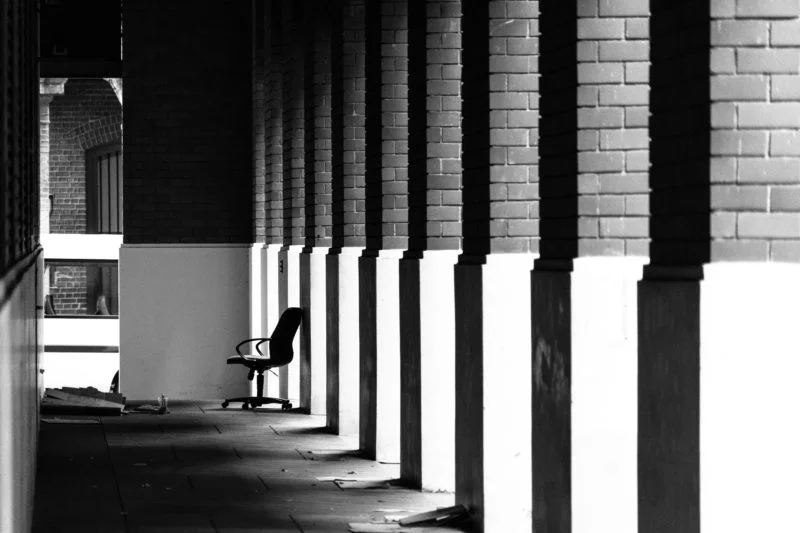
Does street photography have to be spontaneous?
The purists will also affirm this. Street photography must be spontaneous, the people in it must not be aware of the shot. I disagree. Some people believe that street portraits are another genre of portrait photography . But I throw them in the same pot with street photography. A street portrait requires interaction with the subject. Interacting with strangers takes a lot of courage and may deter you in the beginning. But I got to know a lot of interesting people in this way.
Another example of non-spontaneous street photography arises when you make eye contact with your subject. Purists will object that the spontaneity of the moment is lost and the scene is changed. I make it my rule not to make eye contact with a motif . But if this person notices me and looks into the lens when I pull the trigger, I will not reject the picture. Such random encounters often give the picture a humorous component. And eye contact usually gives the picture more intimacy.
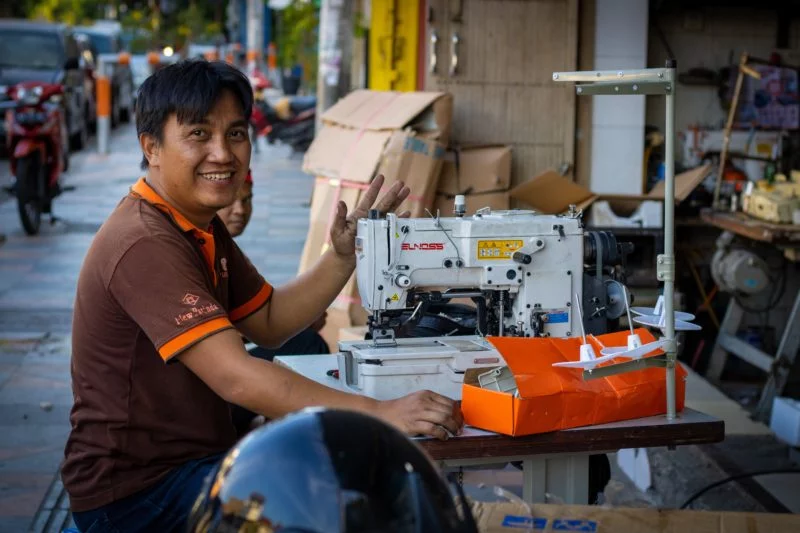
Photographic equipment for street photography
The following applies to street photography : “Less is more”. You want to stay invisible when you’re out on the street. It’s much easier with a small camera. It doesn’t mean that you can’t take street photography with a single-lens reflex camera. But you will stand out so much more and lose the necessary anonymity.
I mainly use lenses with a fixed focal length . I prefer 23 mm and 50 mm lenses on my mirrorless system camera . Fixed focal length lenses are smaller and lighter than zoom lenses. But the picture is even more important. If you work consistently with the same focal length, you will recognize the picture frame before you look through your viewfinder. Experience will teach you to stand correctly. Street activity happens unprepared. By removing the zoom component from the game, you will be able to capture fleeting moments more easily.
For a day on the street I have the following things with me:
- Camera with a lens
- A small sling bag
- Replacement batteries and business cards
- Mobile phone and ID card
When I use my Fujifilm X-T3 with 50 mm f/2 combination, I wear it on a shoulder strap . I use a wrist strap for the Fuji X100F . I don’t take any additional lenses. That only complicates the decision-making process. I zoom with my feet, get close to my subject. And I don’t think “what if I had a different lens with me”.
Comfortable footwear is almost as important as your camera equipment . On a day of street photography, I easily cover 10 to 15 kilometers. The very last thing I could use was blisters or sore feet. And I wear suitable, inconspicuous clothing. I don’t want to get unnecessary attention.
Rules of conduct for street photography
The photographs in public places is allowed in most countries and without any problems. That certainly applies to Western Europe, the USA and Canada. Basically everything can be photographed that is publicly accessible or can be seen from public grounds. But even if you take pictures in a public place, you have to respect people’s privacy. For example, it is unethical and probably even illegal to take pictures from the street in a bedroom. If you are not sure, you should consider local legislation to avoid problems.
Respect and smile
Respect is an essential requirement for street photography . If someone doesn’t want to be photographed, excuse yourself and look for another motif. The streets are full of interesting people, the next motif is waiting around the corner.
A smile works wonders. If someone notices you after taking a picture, smile and thank you with a nod. The motive will most likely smile back and both will go their own way. I have never been asked to delete an image. But of course I would do it. No picture is worth a confrontation. With friendliness and openness you get the farthest. I remember an incident where a man was holding his hand in front of his face while pulling the trigger. I immediately apologized and showed him the picture. His face was then covered by his hand. He laughed and allowed me to keep the picture.
Take children pictures
Photographing children is ethically a tricky business. If I see legal guardians, I always ask for permission before I take a picture. If I don’t see parents, I take photos carefully and mostly hide the faces in my composition.
I was in Normandy last summer. My French is really bad. When I noticed a little boy building a sandcastle on the beach, I signaled to my grandmother my intention to take a picture of him. She was completely thrilled and immediately nodded. Then she ran to her grandson and posed with him. We all laughed a lot about it. But of course that was anything but a spontaneous recording.
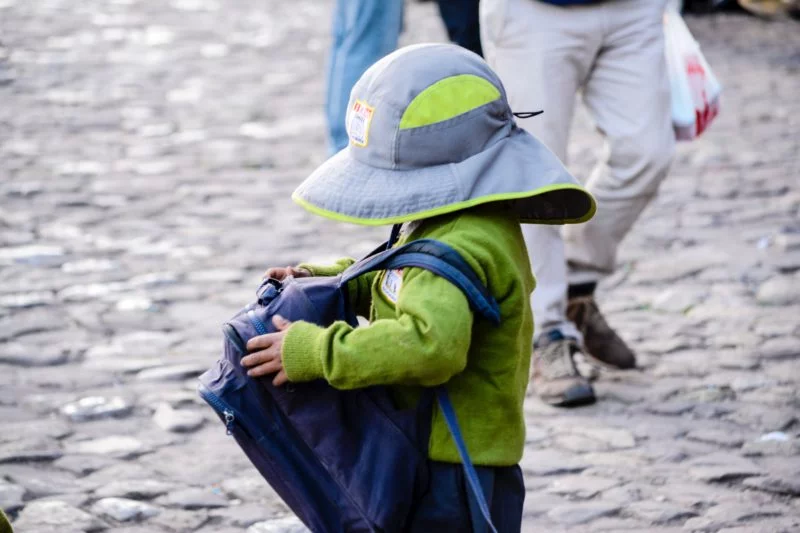
Be sensitive
I attach great importance to not photographing homeless people or people in compromising situations. For me it’s about putting myself in their situation. If I were in their place, would I want to be photographed? If the answer is no, a picture is taboo.
10 tips for street photography – ideas for beginners
Photographing strangers can be a little intimidating at first. Here are a few tips to help you get started with street photography.
1. Take pictures from a distance
As long as you struggle to approach a stranger, take photos from a greater distance. But I don’t mean that you should unpack a telephoto lens. Instead, find a scene with interesting characters. Use a documentary approach. You may feel more comfortable when you take pictures from the other side of the street.
2. Take pictures of street artists
Street artists are used to being photographed. But remember that they’re making a living. So it’s best to drop some money in their hat first. They should notice you. Now you can get started to take your content. Take your time, take pictures from different angles and play with the light. If the artists have a business card, take it. Promise to send them some pictures when you are done.
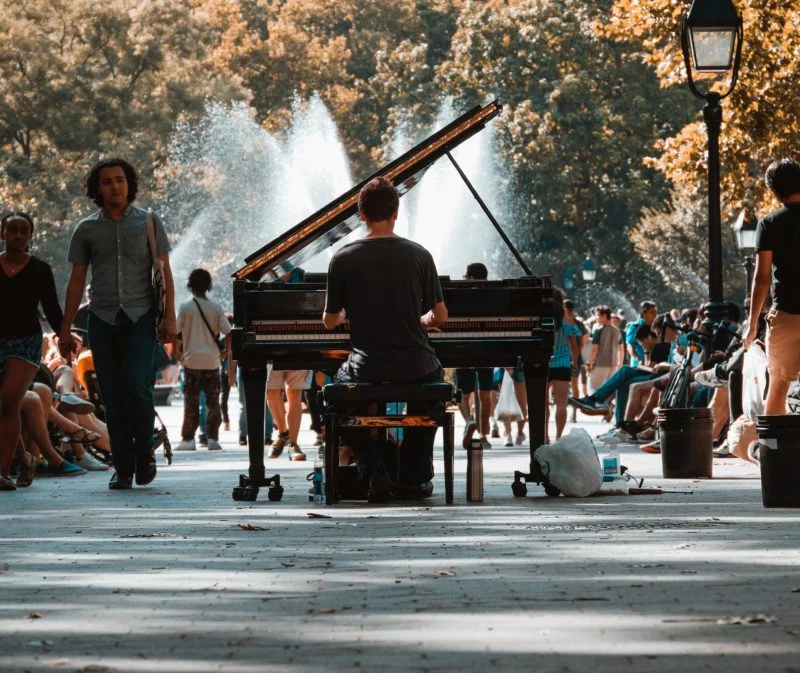
3. Take pictures behind a window
Many newcomers to street photography are afraid of being confronted by their motives. So try to take pictures of a building from the street. The security of the window gives you some protection. But remember, if you get caught, smile!
4. Photograph the back of people
Who says you have to see the face of your subject? Taking photos from behind is a great way to go unnoticed. Look for characters with interesting clothes and distinctive hats
5. Photograph street animals
Who doesn’t love a good picture of a dog or a cat? In addition, photographing animals often leads to good conversations with their owners. And as a transition, this can result in a nice street portrait. Don’t forget to bend your knees when taking pictures of animals. A wide perspective up close gives much more interesting shots.
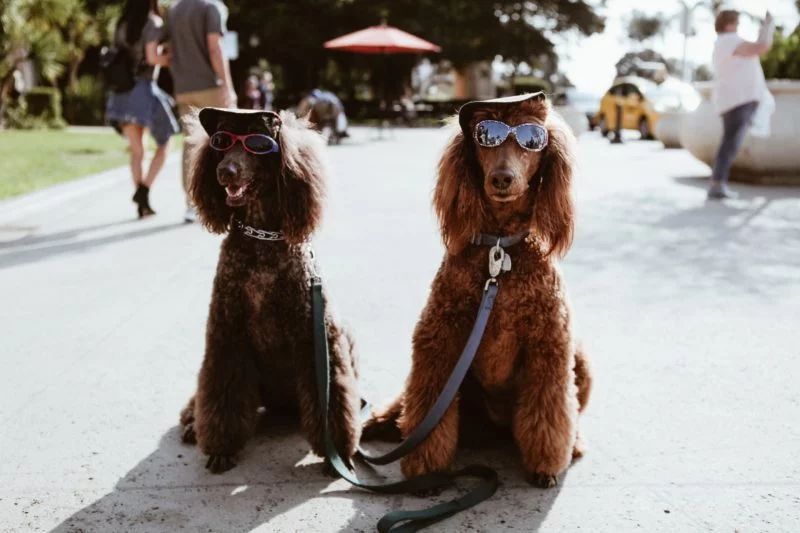
6. Prepare the stage
I use this technique in street photography when I find an interesting background and good light . I take my time to see people come and go. I watch how the light hits them or how a certain background element interacts with them. As soon as I understand all of this, I prepare the scene as a picture. I focus on the place where my motif will be later. And then I wait until the right person enters my stage. Patience is the key here. I don’t press the trigger when someone comes over. I’m waiting for the right person. Maybe she’s wearing a crazy hat or her coat is literally flowing after her. Resist the urge to shoot everyone and everything. Be aware of what you are recording.
7. Photograph silhouettes
Taking silhouettes in street photography is a really good way to take pictures anonymously. Look for a strong light source from behind or a bright window. With this background prepared, you wait until a suitable motif comes by. Use exposure compensation or spot metering to underexpose your image. Both ways result in your subject remaining in the shade and the background being correctly exposed. Make sure that the silhouetted elements do not overlap. With this you ensure clearly recognizable contours. And here too, be patient! Wait for interesting characters and the right moment. Silhouettes create dramatic images. It is worth experimenting with this technique.
8. Use high contrast light
Most photographers tend to pack their gear when the light is bright. But this is a really good time to play with light and shadow in street photography. Pay attention to bundles of light and see how the light behaves when people pass by. If you’re shooting in these conditions, pay close attention to the exposure. Use exposure compensation and correct by one or two levels. This ensures that your subject is correctly exposed when it enters the light beam. Take a look at the topic of bracketing , which fits perfectly with this topic.
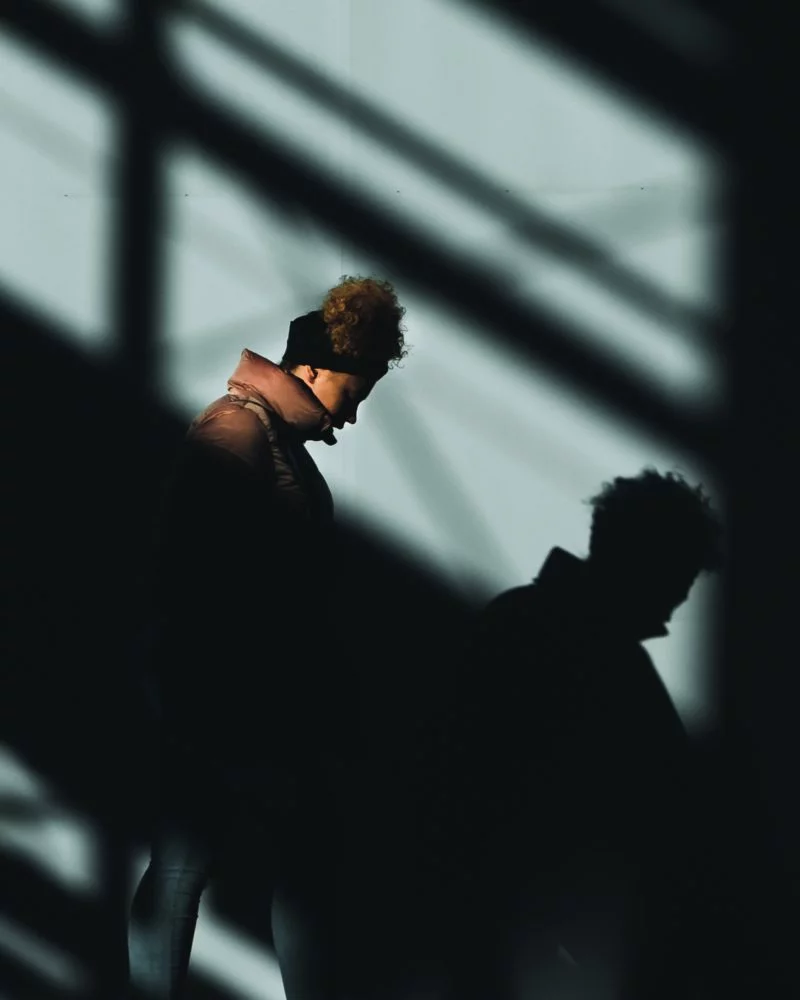
9. Wait for the crucial moment
Henri Cartier-Bresson , the father of street photography, said in an interview with the Washington Post:
When you take a picture there is a creative split second. Your eye must recognize a composition or situation that life itself offers you and you must intuitively know when to trigger the camera. This is the moment when the photographer is creative. Oops! The moment! If you miss it, it’s over forever.
Capturing the crucial moment requires a bit of luck, a quick reaction time and good knowledge of your camera.
I usually set my camera mode to aperture priority. In addition, I use the ISO automatic so that the shutter speeds are sufficiently short. So I am optimally prepared. If something happens suddenly or unprepared, the camera is ready. A subtle gesture to catch a look or a hand gesture can mean the difference between a good and a great street picture.
10. Learn to approach strangers properly
A small warning to shoot street portraits has addictive potential. I still remember how nervous I was about my first portrait of a stranger. But when I got the picture, there was an indescribable elation. I think I addressed half a dozen strangers that afternoon if I could take pictures of them.
The key to agreeing to photograph a stranger is a little flattery. If you run towards someone, wave the camera and shout: “Hello, may I take a picture of you?” You will have little success. No, just walk up to the person, the camera by your side. Tell her you like her smile or how her hair glows in the afternoon sun. Talk to her and tell them that you are a street photographer, that you document the life of this city . Once you have established a connection in this way, they ask: “Would you mind if I take a picture of you?” . With this approach, my experience is that I get my admission in nine out of ten cases.
When you take portraits in street photography, there are a few things you should keep in mind . Before you approach anyone, make sure your camera settings are prepared. Once the person says yes, you don’t want to start fiddling with your camera. And take your time. If she agrees, she will usually be open to multiple recordings. If the light is off, feel free to ask if she would move a little. And finally, offer to send her a picture. That’s why I always have my business cards with me.
Taking street portraits is really very rewarding. I met a number of wonderful people in this way. Give it a try, but keep in mind my warning!
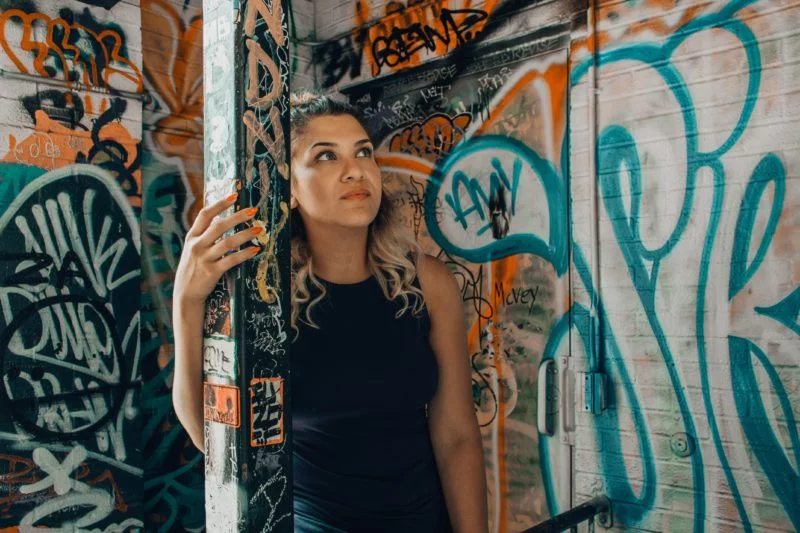
Concluding remarks on street photography
If you want to get into street photography, don’t bother too much with its definition. Instead, focus on the street life as you see it from your individual perspective. Experiment with different focal lengths until you find the right solution for you. Play with the light and how it illuminates your motifs. But the most important thing is that you have fun.
If you want to improve your photographic skills and face the challenge of capturing emotions , gestures and moments that tell a story, try this genre of photography. You will not be disappointed. It is really extremely satisfying to capture street life in such a way that everyday moments seem exceptional. You will also find that your photographic skills improve. As a result, you will be able to apply things you learned in street photography to other areas of photography.